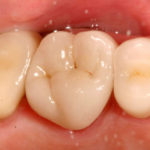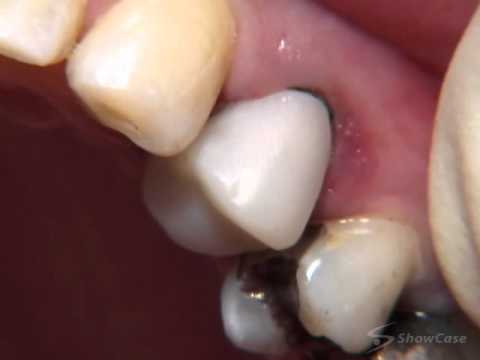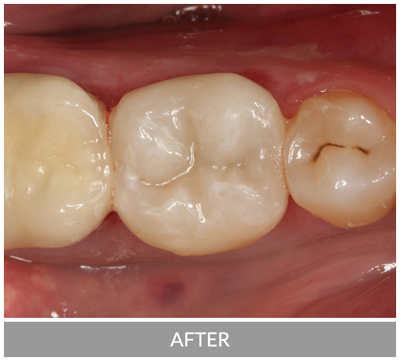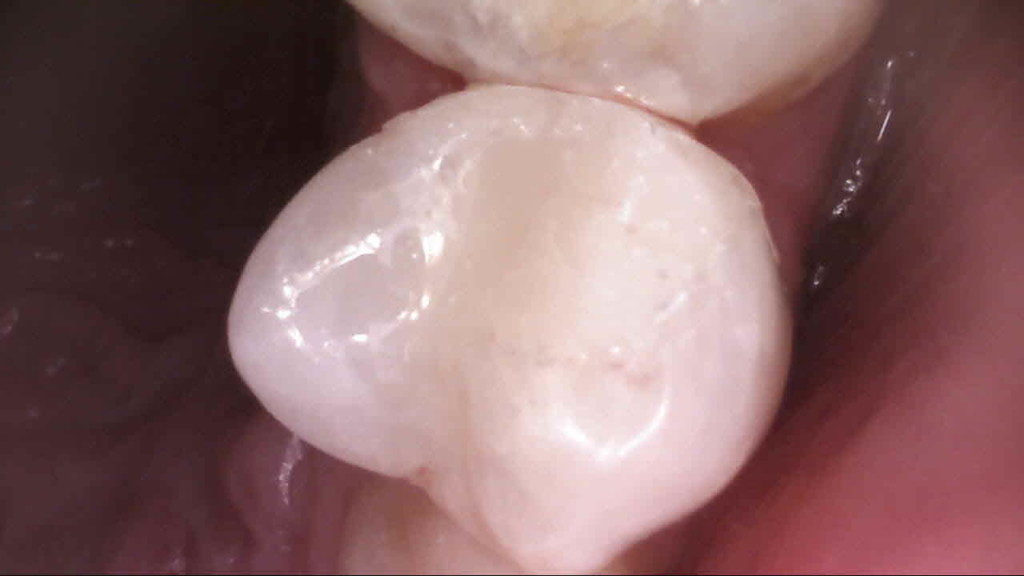It is common at a dental visit, either as part of an active maintenance check or a ‘chipped tooth’ emergency visit to be told the best option is a crown (or even in some practices you NEED a crown)

A crown is advised for a tooth in the following situations: 1) a tooth has lost a large part of its natural above gum structure (the clinical crown) 2) a tooth has a very large ‘filling’ in it with thin natural walls that are painfully springing apart under pressure or threatening to.

3) a tooth has a root canal filling. 4) cosmetic changes
A ‘traditional conventional’ crown involves grinding off 1-2mm all around the side down to the gumline and over the bite surface. A mould is taken of the shaped tooth to be sent to the laboratory to be fabricated (usually milled or cast

ceramic), then once returned to the dentist cemented on. In the interim a temporary cover is placed. This technique means a lot of tooth is sacrificed to create the preparation even if it’s not ‘bad’.
Traditional crowns above left
A ‘modern crown’ involves removing less tooth a similar amount (1-1.5mm) across the bite but only extending down the sides a small amount to create a small wall. Sometimes it may be a partial crown not extending around the full circumference. These partial crowns are also called overlays. It is fabricated in the same way (usually milled or cast ceramic) then cemented or more commonly now, bonded to the tooth.
However there are other options these days which are more conservative of the tooth and are biomimetic – mimicking the tooth natural structure.

The first is a One Visit Crown in which a pre-prepared bite surface resin ceramic overlay with uncured white resin ceramic is placed on the prepared tooth, moulded to fit the sides then bonded to the tooth all in

a single visit. It is durable, wears like a natural tooth, and is more affordable.
OVC on a premolar


OVC on a molar
The second is a direct rebuild with light cured resin ceramic paste or composite. This is layered and frequently incorporates polyester fibre mesh to de-stress the restoration and strengthen it. It is generally layered with composites of different consistencies which mimic the different layers of a natural tooth structure. A new technique coming is the use of warmed composite injected into a shaped matrix which ‘shrink wraps’ the tooth on light curing.

Information brought to you by Waiheke Dental Centre 2 Putiki Rd Ostend
24 April 2019

What do you think? Share your thoughts...
You must be logged in to post a comment.